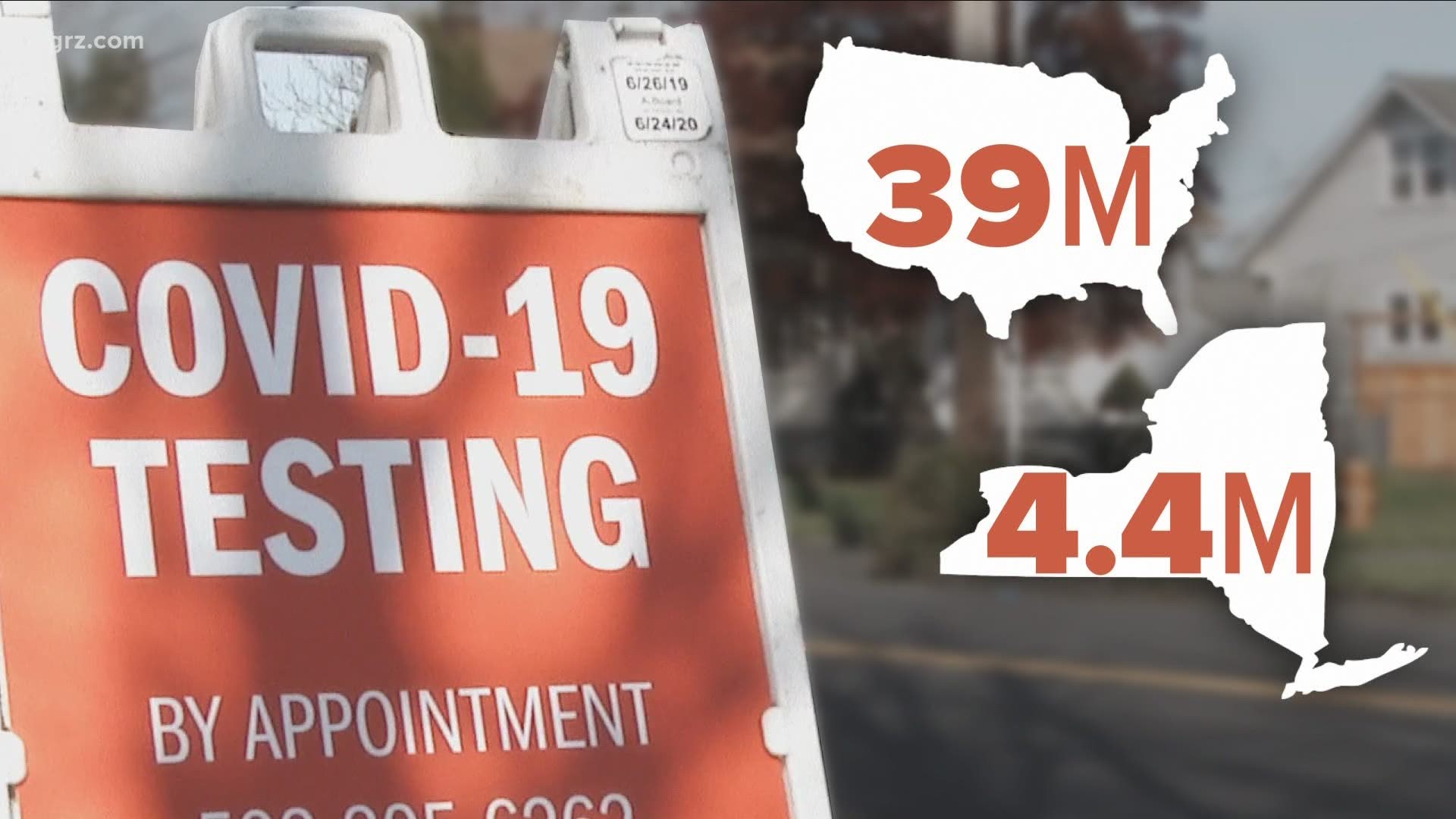ALBANY, N.Y. — The number of COVID-19 positive tests for July 8 in New York State was under one percent.
There were 584 new cases statewide out of the 65,564 tests conducted, bringing the total COVID-19 confirmed cases to 399,513.
There were eight COVID-19 related deaths on Wednesday. There are now 24,959 total COVID-19 related deaths statewide.
"New York continues to make progress fighting COVID-19 through a smart, data-driven approach and the thoughtful actions of everyday citizens, who've been practicing social distancing, mask wearing and hand washing," Governor Cuomo said. "But the surge in new cases and hospitalizations throughout the country - and the potential for those people to bring the virus into New York - combined with the complacency we've seen in parts of our own state is a potentially deadly mix. We need to stay vigilant and smart so we don't go back to the hell we experienced just two months ago. We are not out of the woods yet."
There are currently 851 COVID-19 hospitalizations. Nearly 200 are in ICU and of those 98 with intubation.
RELATED: Erie County sees spike in COVID-19 cases among people in their 20s, 30s due to travel and parties
Human coronaviruses are usually spread through...
• The air by coughing or sneezing
• Close personal contact, such as touching or shaking hands
• Touching an object or surface with the virus on it, then touching your mouth, nose or eyes before washing your hands.
Help stop the spread of coronavirus
• Stay home when you are sick.
• Eat and sleep separately from your family members
• Use different utensils and dishes
• Cover your cough or sneeze with your arm, hot your hand.
• If you use a tissue, throw it in the trash.
Lower your risk
• Wash your hands often with soap and water for at least 20 seconds. If soap and water are not available, use an alcohol-based hand sanitizer.
• Avoid touching your eyes, nose, and mouth with unwashed hands.
• Avoid close contact with people who are sick.
• Clean and disinfect frequently touched objects and surfaces.
• If you are 60 or over and have an underlying health condition such as cardiovascular disease, diabetes or respiratory illnesses like asthma or COPD, the World Health Organization advises you to try to avoid crowds or places where you might interact with people who are sick.

